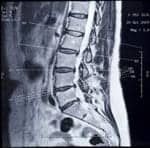.png)
Timothy E. Hewett, PhD, FACSM, director of research, Ohio University Sports Health and Performance Institute, Columbus, Ohio, and Cincinnati Children’s Sports Medicine Biodynamics Center, states that a triplanar multidimensional combination of factors is to blame. Hewett explains the traditional questions regarding ACL injury, which include, “Is it just anterior translation that strains and tears the ACL? Is it just knee abduction or that inward motion that tears the ACL? Is it just internal rotation that tears the ACL? Our study demonstrates that each one of these factors can strain the ACL. But it is the combination of anterior translation, abduction, and internal rotation that likely ruptures the ACL,” Hewett says in an ORS news release.
Hewett reports that he and his team conducted simulated jump landings on 19 cadaveric models during the study. The results indicated there were 17 ACL failures using a custom drop-stand. The models were then divided into two loading groups: those without anterior shear and those with anterior shear. Researchers note they tested the effects of anterior tibial shear, abduction, and internal rotation under dynamic axial loading on ACL biomechanics. The study suggested that single-axis abduction increased average ACL strain from 6% to 10%. Both groups, researchers say, exhibited increased ACL loading with the addition of abduction or internal rotation, with abduction loading the ACL more than internal rotation.
Researchers add that under axial impact, the blend of abduction, internal rotation, and anterior shear, the average ACL strain was significantly increased. Hewett points to the blend as the “most critical dynamic condition that leads to ACL failure.”
Source: ORS




